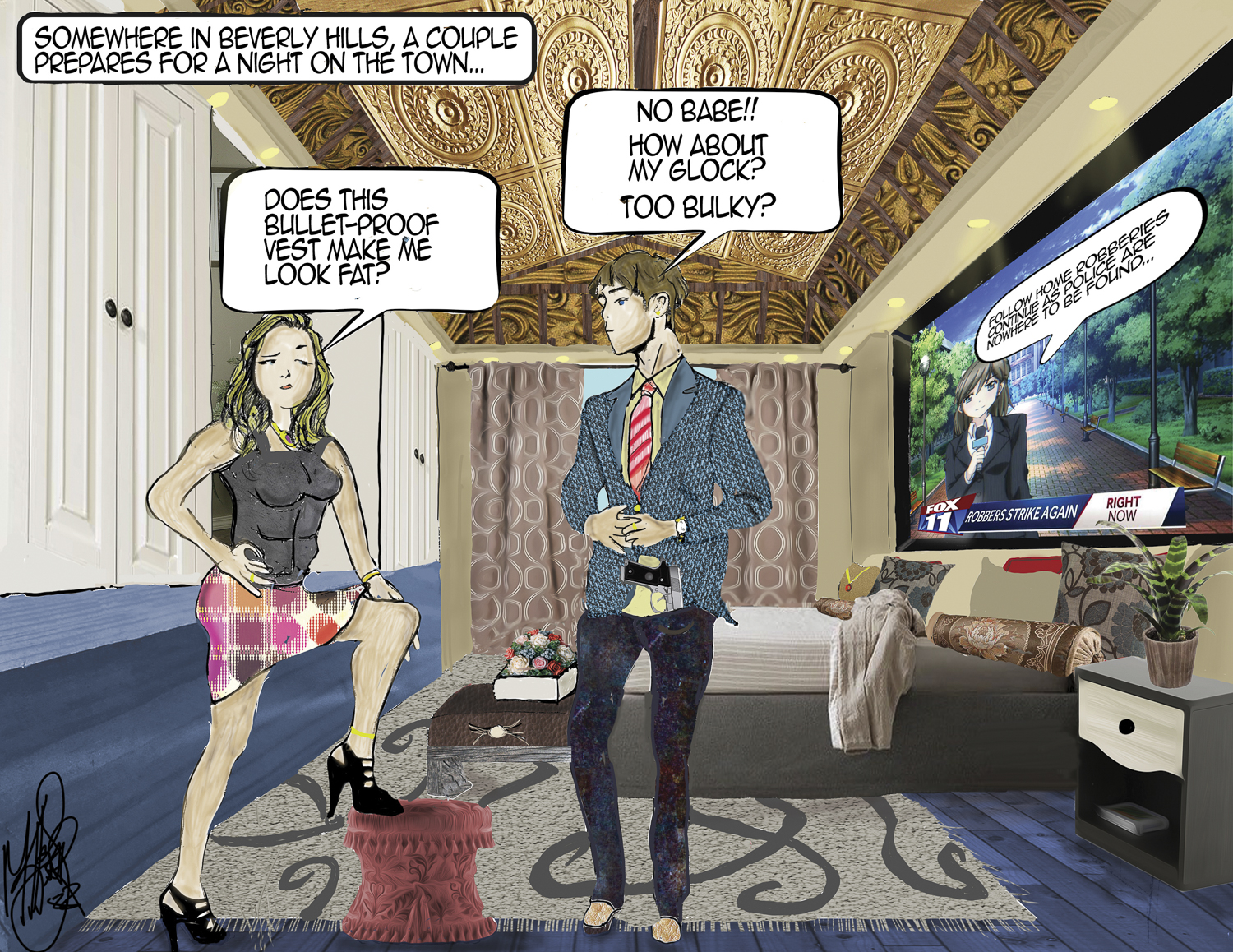Talking about the police can be a bit of a complicated endeavor. While we advocate for the abolishment of the police or, at the very least, a serious transfer of funds away from the police and into social and community programs, we realize that’s a far-off prospect. So, we decided to challenge our new Opinions editor to explore what effective policing might look like in our communities. Maybe we can have that at least.
Los Angeles has recently experienced a spike in crime. According to Crosstown, violent muggings, follow-home robberies and even pet nappings are now on the rise in places like West Hollywood and Beverly Hills. Many of these areas were once safe to walk through — day or night. Now people go out in pairs during the day and shop for guns and bulletproof gear to accompany them on their dinner engagements.
With WeHo’s recent decision to cut back on police funding and replace deputies with unarmed “security ambassadors,” some worry that crime will continue to climb in areas that are already experiencing higher than usual crime rates and that the responsibility for keeping streets safe will fall solely on community leaders.
But a reduction in police presence may not even be noticed. “Police presence” is a funny phrase. Traditionally, it conjures images of officers walking down the sidewalk, greeting shop owners and passersby — getting to know the neighborhood. Residents knew their local cops by name: Officer Smith, Sgt. Jones, Lt. Gonzalez.
But for the LAPD, there seems to be a different definition, one that lacks human-to-human connection, creating a divide between the public and those sworn to protect it. Gone are the days when people knew their local cop’s name — and there were enough people on WeHo’s city council who knew this when they voted to replace police officers with ambassadors.
Faith in the police and their abilities to prevent crime has atrophied.
For years, LAPD officers have done their rounds in vehicles, not on foot. “Walking the beat” is a thing of the past. The average Angeleno is experienced in seeing squad cars driving by with two officers inside chatting, laughing, eating and scrolling through their phones.
They’re not looking side-to-side.
They’re not being vigilant to the comings and goings of the shops that line the avenues.
They’re not focused on who’s around and whether they are armed or anything of that nature.
They’re focused on what’s in front of them: the street. Not the sidewalk. The street.
This is not an issue that is unique to Los Angeles. In 2008, the then police commissioner of Philadelphia, Charles Ramsey, decided to try a combination of “foot patrol” and “hot spot policing,” in which officers were assigned to walk in areas reporting high rates of crime. This resulted in a 23% reduction in violent crime in these areas, as well as bonds formed between officers and civilians.
So, before panic ensues, let’s all take a moment to breathe and think. The LAPD’s current playbook fails to live up to expectations. The “Philadelphia Foot Patrol Experiment” shows promise and, at the very least, demands our attention and consideration.
But that’s not enough to combat the years of bad karma the LAPD has accumulated. Since the Rodney King beating in 1991, people have recorded police abusing their authority and showing a total disregard for human life multiple times. King’s beating was the first of many incidents that drew the public’s attention to the excessive use of force used by police. This, in turn, has engendered a deep mistrust of the police, with some residents even becoming afraid to call for help.
One of the biggest criticisms police receive in this city relates to the fact that officers usually don’t patrol the same neighborhoods they live in. Having an on-foot police presence helps curtail this issue by fostering a relationship between that officer and the neighborhood — regardless of whether or not they live there.
Then there’s the issue of police brutality. The L.A. Times reported a spike in police shootings and killings of unarmed persons in 2021 over the previous two years — resulting in 17 deaths. Familiarity with a neighborhood could help to curb this number. Officers who patrol on foot come to know who’s who and who should raise some concerns. They’ll know who is just your average citizen and who may be struggling with mental health issues — it’s estimated that one-third of the people shot showed signs of mental illness at the time of their confrontation with police.
We can attain a healthy union between police officers and citizens. With work and dedication from the police force, we can siphon out the sourness in our relationship.

